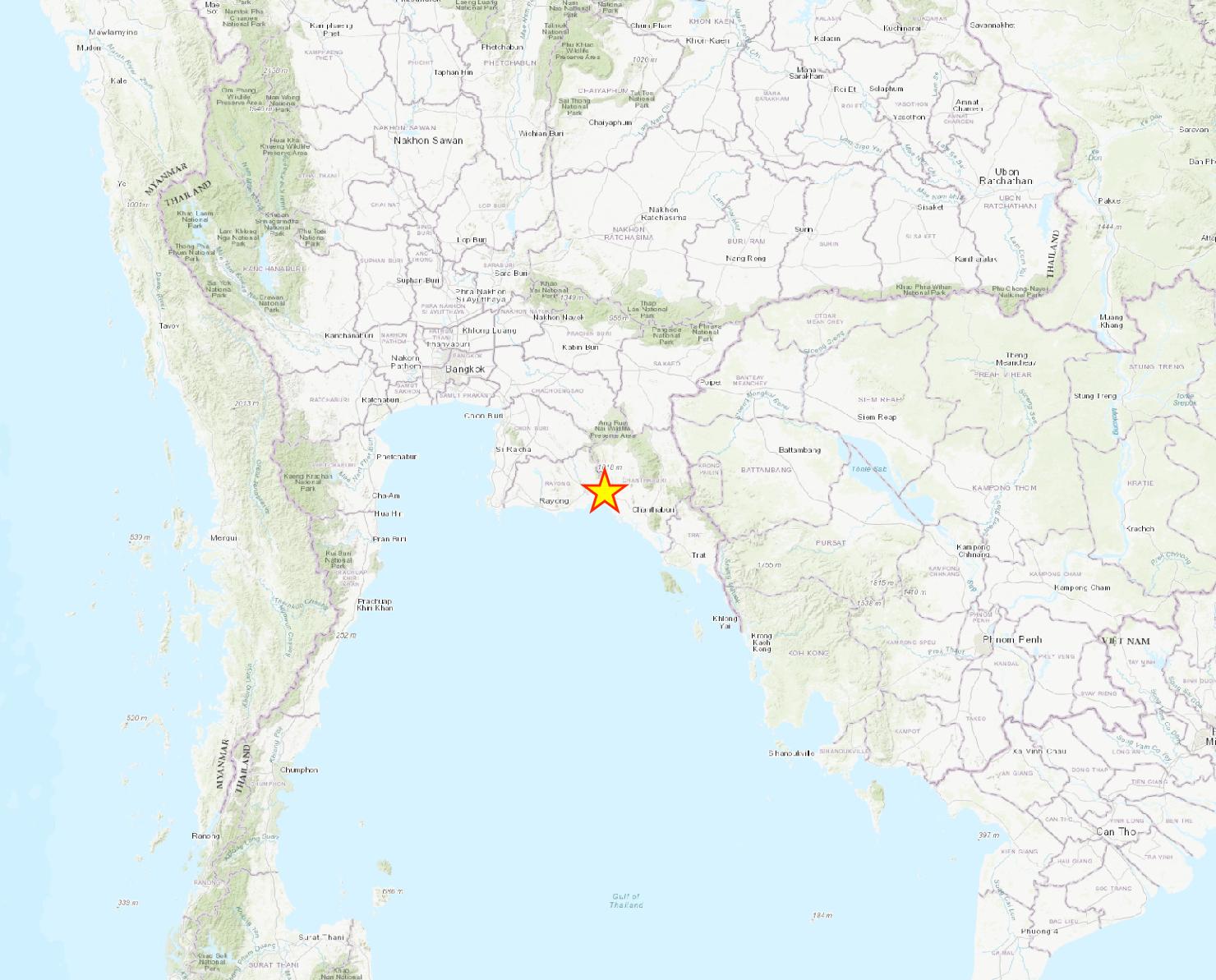Wat Khao Hin Limestone Fm
Type Locality and Naming
Khao Chamao area between Khao Cha-ang On in the north and Khao Suk Phrai Wan in the south (Fontaine & Salyapongse, 1998, Fontaine et al., 1999b – their second of three units).
Synonym:
[Figure: Screenshot from ESRI topographic map of QGIS, with the type locality highlighted.]
Lithology and Thickness
A thin- to thick-bedded, partly dolomitized, micritic to bioclastic limestone succession c. 200 m thick.
Relationships and Distribution
Lower contact
Overlies (or partly coeval) with unnamed Middle Permian strata of a thick tuffaceous sandstone and shale unit with small limestone lenses.
Upper contact
Overlain by ‘oncolitic’ limestone (Fontaine & Salyapongse 1999) with minor siliciclastic and tuffaceous beds, which was attributed to the Sookpriwan Fm.
Regional extent
Klaeng zone (SE extension of the Sukhothai Zone): "Significantly, the fossil content and lithofacies of the Permian ENE of Klaeng invite a correlation with the Sukhothai Zone of Northern Thailand. There, mixed siliciclastic-carbonate strata of Changhsingian age, yielding fusulines (particularly Palaeofusulina) and lyttoniid brachiopods, are known only in the Huai Tak Fm (Huai Thak Fm) of the Ngao Gr, the Rong Kwang Fm of the Uttaradit Gr" (Ueno & Charoentitirat, 2011
GeoJSON
Fossils
"Containing algal, foraminiferal, sponge, bryozoan, molluscan, ostracod and crinoid remains. Large alatoconchid bivalves are characteristic and the foraminifers include Geinitzina, Pachyphloia, Colaniella, Climacammina, Globivalvulina, Paraglobivalvulina, Dagmarita, Reichelina and Palaeofusulina. They again suggest a latest Permian (Changhsingian) age.
Age
Depositional setting
Additional Information
